The Spy Who Loves Me: We Need Him Now to Stop Rogues with Submarines & Nukes
By Mike Sparks
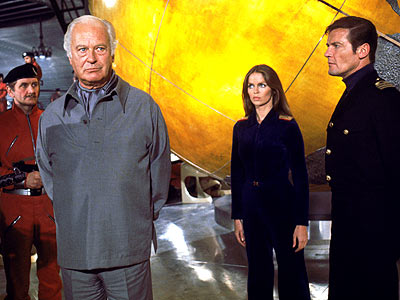
In the fabulous 1977 movie, The Spy who Loved Me, James Bond agent 007 played by Roger Moore re-connects with his Royal Navy roots as a Commander as his creator Ian Fleming was in WW2. The story based more on Moonraker's ballistic missile and submarine threats than the book by the same name, has what appears to be a civilian oil tanker operated by an evil Nazi-like corporation CEO played by Curt Jurgens (U-Boat commander in 1957's The Enemy Below) capturing American and Russian nuclear-powered and armed missile submarines in order to stage false flag attacks on both countries to con them into WW3.
 www.youtube.com/view_play_list?p=CB29FAFE282591FC
www.youtube.com/view_play_list?p=CB29FAFE282591FC
While it's possible to launch long-range, missiles from under the water, the simplest way is to fire them from land. If from mobile transporter-erector-launchers (TELs) we know from our experiences hunting German V-2s in WW2 and more lately Iraqi Scuds--that it will be difficult if not impossible to find/destroy them to prevent launch--especially if only small numbers of men are sent out to find them. LTG James Gavin warned us about the mobile ballistic missile in 1958 upon his retirement--yet we still have not "received the memo". Numerous James Bond movies repeat this warning yet we persist that they are a problem easily thwarted far downstream by swatting them as they are already launched and moving thousands of miles per hour towards us--with another missile. Gavin warned that guidance would improve and make our bloated bases and ways to assemble for war fatally vulnerable; to counteract this he created the M113 armored personnel carrier--a light tank---that could be mass-produced for the entire Army so it could stay cross-country mobile and dispersed over potentially nuclear battlefields littered with obstacles and debris. Read LTG Gavin's book; War and Peace in the Space Age by clicking on the hyperlink below:
combatreform.org/warandpeaceinthespaceage.htm
Council on Foreign Relations (CFR) outer circle member retired U.S. Army LTC Andrew Krepinevich makes a similar ominous warning in the July-August 2009 Foreign Affairs in his article: "The Pentagon's Wasting Assets The Eroding Foundations of American Power" that the U.S. military is not properly adapting to the growing threat from ENEMY Precision Guided Munitions (PGMs) in its force structure, vulnerable equipment and bloated basing.
www.scribd.com/doc/24031188/Pentagon-s-Wasting-Assets-Krepinevich
With Amerocentric national hubris like Nazis, we view PGMs as solely OFFENSIVE means we exclusively own and operate--and ignore our own defense against enemies that could have them.
combatreform.org/PGMsareNAZI.htm
These and many other honest warnings are going unheeded by those that would love to see 2 BILLION people exterminated for de-population goals by the continued deliberate sabotage of the U.S. and NATO militaries along bureaucratic tendency lines that want to absurdly relive WW2 badly.
Former British para and hard-nosed journalist Thomas Harding of the Daily Telegraph asks the right questions also, but paints an overly optimistic picture of anti-missile missiles saving the day after rogues have already sent nuclear-tipped ballistic missiles skyward. One scenario I was surprised that as a Brit, Harding didn't mention, was the economic and food strangulation a nation like his could suffer from modern stealthy quiet diesel-electric submarines shooting guided torpedoes and laying "smart" sea mines.
PGM Blockade Breaker Ships
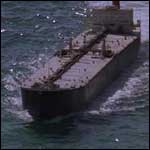
England nearly lost WW2 due to U-boat (submersible boat) strangulation of food stuffs and war supplies.
 www.youtube.com/view_play_list?p=C87F79B288035541
www.youtube.com/view_play_list?p=C87F79B288035541
If England had fallen, the Germans would have had the time to finish their high-technology "V' weapons to include nuclear weapons to tip them--and won the war.
combatreform.org/black_sun.htm
What saved us was more than the ULTRA Secret of being able to cheat and read the German's mail, it was the amazing courage of German military intelligence leader Admiral Canaris who as a hero of mankind that opposed Hitler from the very beginning. It was Canaris who plotted with Commander Ian Fleming's naval intelligence division and MI6 to deceive Franco into keeping Spain out of the war and conning Hitler into not seizing the narrow passageway at Gibraltar and closing off the Mediterranean sea that saved England and won WW2. The supply convoys coming from the U.S. to England and Russia were guarded by planes launched from desperate catapults and merchant ships with flight decks slapped on top of them:
combatreform.org/thunderballfromthesea.htm
...that were just enough to fight off German Fw200 Condor maritime patrol planes from radioing their locations to U-boats, shoot-down enemy torpedo planes and strafe German submersibles while on the surface running diesel engines to recharge their electric batteries.
It was indeed that close.
Today's diesel-electrics (DE) are true submarines that can recharge much more powerful batteries than the WW2 U-Boats had while submerged using snorkels and are so quiet we have all had to return to actively pinging sonar to try to find them. It appears the South Korean Anti-Submarine Warfare (ASW) corvette the Cheonan whose job it is to find stealthy DE submarines and mini-submarines couldn't even defend itself and was sunk.
combatreform.org/theendofflimsysurfaceships.htm
combatreform.org/thunderballfromunderthesea.htm
It appears that today an enemy with DE submarines could go from check to check-mate and lay seamines around a maritime-commerce dependant nation like Taiwan or even the mighty United Kingdom with its usually fantastic Royal Navy and force a political surrender or even take-over. Container ships and oil tankers coming in with vital foodstuffs and war materials to fight back would be ambushed before even reaching the sea mine belts. As usual, the U.S. Navy is not even remotely interested in escorting these civilian ships through despite it being their Mahan-defined job to do so. Its just like WW2 when President Roosevelt had to ORDER Navy Chief Admiral King to escort supply convoys. The U.S. Navy wants to fight mirror images of itself in a climactic battle re-enactment of the irrelevant Battle of Midway in 1942--and smart enemies will refuse to indulge their narcissism. Details:
combatreform.org/midwaymyth.htm
In 1942, America's Army and Air Forces were well on their way to land base hopping to Japan via the long route from the south Pacific; any Imperial Japanese Navy (IJN) ships attempting to get in their way were sunk--the same dilemma navies today confront if they venture too close to shore--except thousands of PGMs can rain down on them, too.

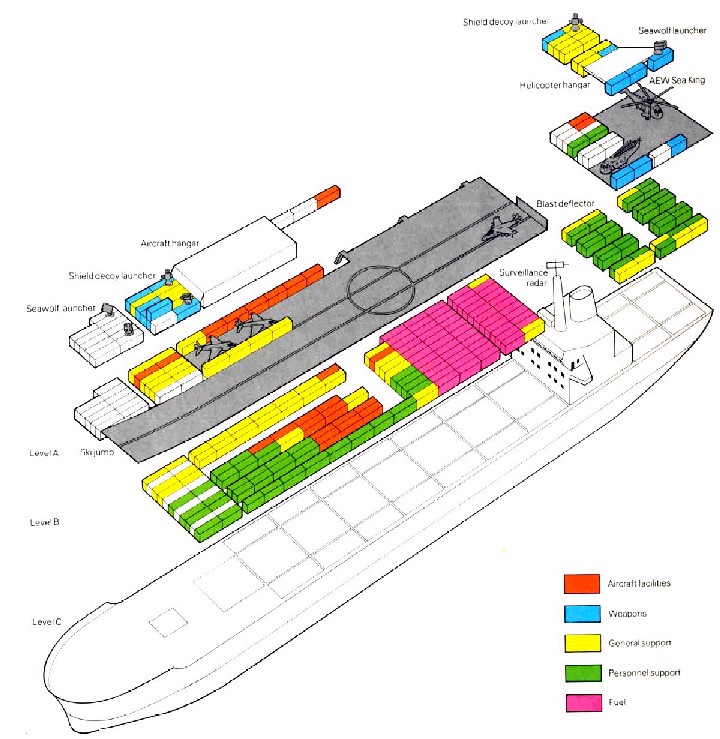
All of this has already been confronted in Arthur T. Hadley's brilliant book, The Straw Giant--and of course ignored. The British have figured out to guard their supply ships an Arapaho kit should be added to them of defensive missiles, sensors and a flight deck for an ASW helicopter. Of course, the USN bureaucracy wasn't even interested in Naval Reservists manning these, so today the Free World stands vulnerable to naval blockades.
First off, Congress should ORDER the USN to do its damn job and operate 100 Arapaho conversion kits based on ISO shipping containers offering a small flight deck for ASW/ASuW long endurance, fixed-wing, 2-man seaplane fighters derived from crop dusters powered by on-demand hydrogen converted from sea water as needed. This way, small groups of about 3 ships each could fan out and infiltrate into a blockaded nation and over-tax the enemy submarines from multiple directions. If the enemy submarine or submarines change direction towards the mini-convoy perhaps steered by satellite recon, each one would have its own outer circle of protection from their ASW/ASuW seaplanes that can drop sonobuoy or land on the water to actively ping sonar. Once an enemy submarine is detected the ASW/ASuW seaplanes can attack/destroy them with guided torpedoes.
Another class of ship the USNR should operate would be obsolete double-hulled oil tankers that would be filled with floatation materials and thus be unsinkable "PGM Breakerships". In WW2 Q-Ships were similarly filled with floatation materials to con the Germans into wasting torpedoes on them.
combatreform.org/seapirates.htm
A PGM breakership would sail with each mini-convoy and act as a PGM firepower magnet absorbing costly torpedoes and missiles into them without stopping or sinking them. These ships could also break seamines to create safe paths for the ships following behind them to get into port.
PGM Assault Ship: Sea Counter to Land-Based Mobile Missiles
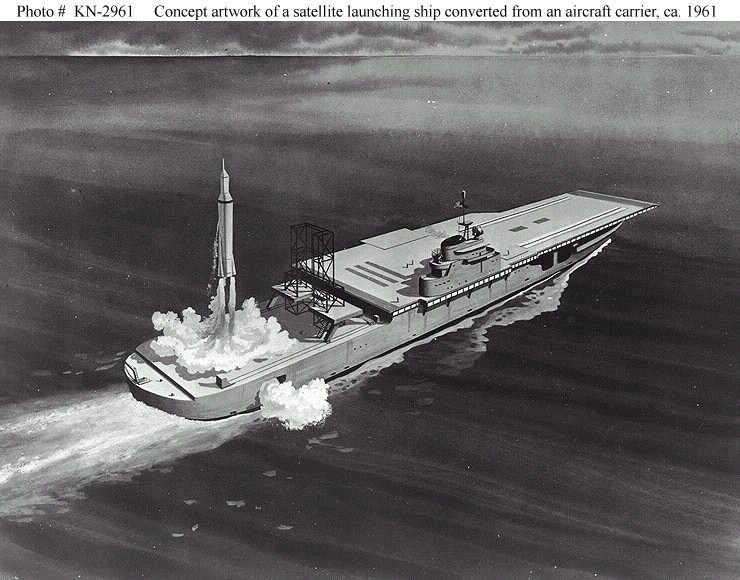
Telegraph Defense Correspondent Thomas Harding lays-out a highly likely melt-down in Pakistan where rebels gain control of nuclear ballistic missiles and decide to launch them at their hated enemy in India to effect mass murder.
Pakistan 2018
• Crisis:
• Response: The UN authorises a multi-national stabilisation force led by a U.S. division and fleet, with a Chinese task force with its new aircraft carrier in the coalition. After three years of recovery from bloody fighting in Helmand, Britain agrees to send one of its five new manoeuvre brigades, equipped with tanks, mine-protected vehicles, armed drones and a fleet of attack and transport helicopters. In the Indian Ocean, two Type 45 destroyers, re-equipped with new anti-ballistic missiles from the U.S. Navy, act as a last-ditch defence against a nuclear missile launch.
• Outcome: F-35 Joint Strike Fighters (pictured above) are launched from U.S. and British aircraft carriers against the missile silos. But the rebels manage to launch two nuclear warheads at an installation near Karachi towards Mumbai, 300 miles away. Both are shot down, one by a US warship and one by a Type 45 destroyer. A joint US.., British and Chinese amphibious assault storms ashore to the west of Karachi and captures key airfields. In all, 10,000 men are flown in by the RAF's new transport fleet. An international force of more than 100,000 troops retakes rebel-held areas. The UN force agrees to maintain security for two years while it trains up a stable Pakistani military.
• Likelihood: Very likely
• Readiness: Almost ready
Problems
Real James Bond Villains Would Love this to Happen for Real
AFAIK, Pakistan's SSMs are MOBILE on transporter-erector-launchers--not in silos. Thus, it's not likely that air strikes will be effective COUNTER-FORCE means; nearly ALL of Pakistan's nuclear missiles would be launched into India, murdering nearly 1 BILLION people. India will retaliate and wipe-out Pakistan's population expanding the slaughter to almost 2 BILLION people--sure to make the sick fucks in the Illuminati very happy. Anti-Ballistic Missile (ABM) defense from USN and RN ships is a pipe dream and should not be counted on.
Clearly, what is needed is an INSTANT POWERFUL COUNTERFORCE FIREPOWER & MANEUVER MEANS. We are only talking about hours and days here; I don't think it would be after a number of years of instability and warning that a rogue Pakistan would launch to annihilate India.
Current U.S. PGMs launched from submarines, surface ships and aircraft geared to fight another enemy military are not poised and ready to strike instantly and will need time to gain targeting coordinates to program their missiles and plan strike missions.
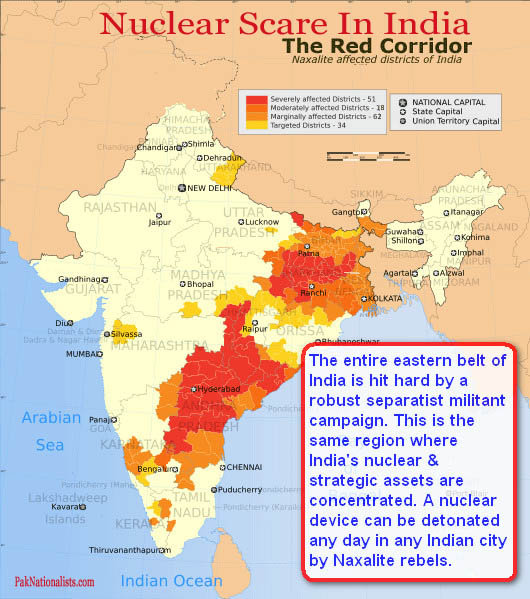
 www.youtube.com/watch?v=N6dKCkv1fzs
www.youtube.com/watch?v=N6dKCkv1fzs
What we need is a container ship with its own ballistic missiles (like the Russian Club-K system)--say 100 of them ready to transition from civilian life to war in an instant that can rain down on a rogue Pakistan's mobile TELs spread all over an area and camouflaged. Airborne/Special Operations Forces (SOFs) and James Bonds will have to have located these mobile missiles and keep update programming the PGM-Assault Ship's ballistic missiles so they will take-out the land-based mobile missiles.
combatreform.org/reconinforce.htm
PGM Reconnaissance-in-Force Units (RIFs)
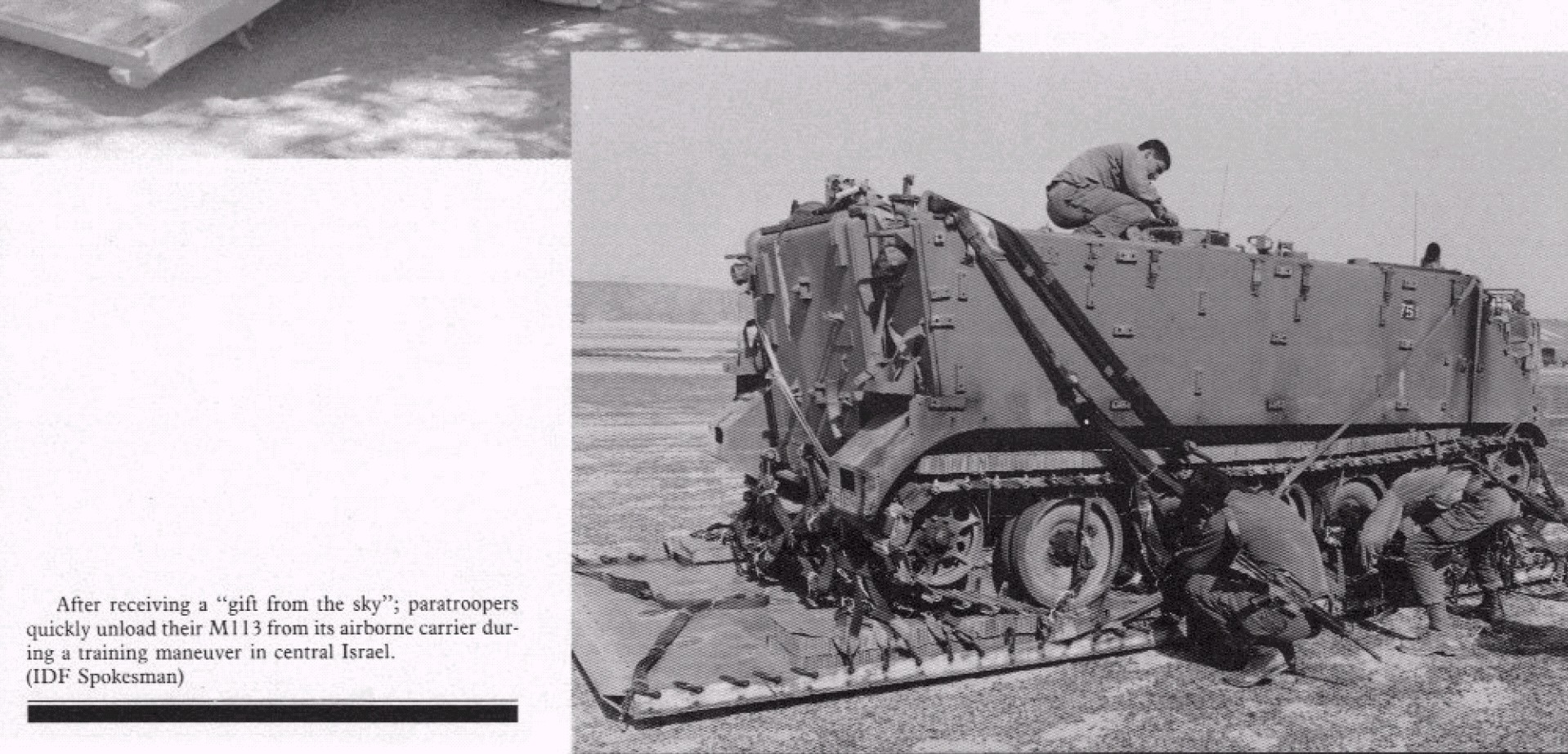
Now the Navy is going to obviously say that "they are not interested in operating these civilian ships yadda yadda".
Fine.
Let the U.S. Army operate them as Commando ships; there is a long history of armies having to operate their own ships in order to get to the fight; the Japanese had to do it in WW2 and of course today the Army operates more landing craft than the Navy.
combatreform.org/AIRBORNEMUSEUM/sld026.htm
The modularity offered by containers enables such ships to be rapidly reconfigured from carrying missiles to carrying STOL, VTOL aircraft and commandos--who could insert ashore in light tracked tanks and scout for the enemy's PGMs and relay back the necessary targeting information:
Commando container assault ships will enable our RIFs to recon rogues we suspect are getting ready to strike during the interlude period of false peace.
PGM Escort Force
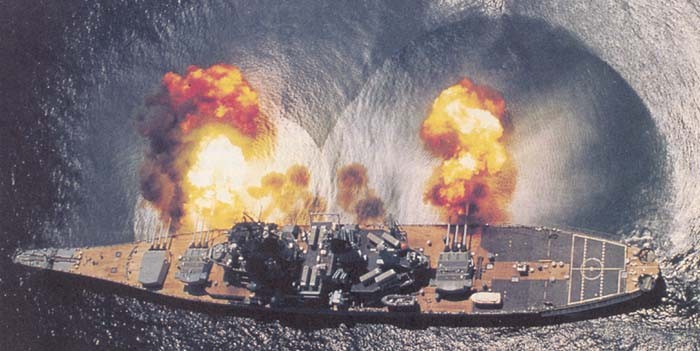
Critics will say that container ships themselves will be vulnerable to the same PGMs that USN warships are and more so because they lack armor, firefighting means etc. While we can and should harden our commando container assault ships, and they would operate primarily in the peacetime waters of when sub-national conflicts are sought to be smothered, the fact remains that if wars turn high technological their presence at sea could be challenged. For their escort we need truly armored ships--not yet more vulnerable surface ships that would be additional targets.
For this, we need to recall to active duty at least two Iowa class heavily-armored battleships and modify them to be aircraft battleships so F-35 STOVL aircraft can provide air cover from enemy air attacks which could come from business jets modified to carry anti-ship missiles as well as high performance SU-35 Flankers.
combatreform.org/battleships.htm
PGM Assault Force
A rogue nation-state is not going to invest significant monies into PGMs and weapons of mass destruction (WMDs) and have them guarded by rent-a-cops.
While our RIFs can evade detection by their light tank stealth and do some fighting to destroy weakly defended targets, they are not going to be able to pierce an enemy armored brigade and finish off what the PGM Assault ships' missiles couldn't. To do this, we need a LARGE air-Mechanized Commando (MECHANDO) FORCE IN BEING; not something thrown together ad hoc, definitely not the low-skilled, foot-slogging and truck-hopping USMC from costly amphibious ships re-enacting WW2 badly and asking for PGMs to land on them and kill thousands of gyrenes and sailors packed in like sardines. It's like the USMC has never cracked open a book on WW2--except their from their own self-adulating propaganda mill and read what happened to the troopships Lancastria, Dorchester and the Rohna--the latter sunk by a German PGM. On the Dorchester, 4 U.S. Army Lieutenant Chaplains sacrificed their lives and gave their life jackets to other men. Later we awarded these men the Distinguished Service Cross, which I think is an outrage--they should all be awarded the Congressional Medal of Honor (CMH). What they did needs to be at THE TOP of our consciousness; and I suspect there are evil political motives to not recognize these men with CMHs--because it would HIGHLIGHT U.S. NAVY INCOMPETENCE for failing to effectively guard the troop ships from enemy attack as well as remind everyone that the USMC troopship mentality is bogus and must be stopped.
http://en.wikipedia.org/wiki/Four_Chaplains
The chaplains, who all held the rank of lieutenant, were the Methodist Reverend George L. Fox, Rabbi Alexander D. Goode, the Roman Catholic Priest John P. Washington and the Reformed Church in America Reverend Clark V. Poling. They were sailing on the USAT Dorchester, a coastal liner that had been converted to a troop transport for World War II. On the night of February 3, 1943, the vessel, travelling in convoy, was torpedoed by the German submarine U-223 off Newfoundland in the North Atlantic.[1]
The torpedo knocked out the Dorchester's electrical system, leaving the ship dark. Panic set in among the men on board, many of them trapped below decks. The chaplains sought to calm the men and organize an orderly evacuation of the ship, and helped guide wounded men to safety. As life jackets were passed out to the men, the supply ran out before each man had one. The chaplains removed their own life jackets and gave them to others. They helped as many men as they could into lifeboats, and then linked arms and, saying prayers and singing hymns, went down with the ship.
In all, 230 of the 904 men aboard the ship were rescued. Life jackets offered little protection from
As I swam away from the ship, I looked back. The flares had lighted everything. The
bow came up high and she slid under. The last thing I saw, the Four Chaplains were up there praying for the safety of the men. They had done everything they could. I did not see them again. They themselves did not have a chance without their life jackets.
-Grady Clark, survivor
[2]

On December 19, 1944, all four chaplains were posthumously awarded the Purple Heart and the Distinguished Service Cross.[4]. The Four Chaplains' Medal was established by act of Congress on July 14, 1960, and was presented posthumously to their next of kin by Secretary of the Army Wilber M. Brucker at Ft. Myer, Virginia on January 18, 1961 [5].
Also notice that about 1, 000 men died in each of these troopship tragedies and those thrown in the water often died of exposure. ALL personnel-Navy or civilian "non-combatants" should wear a small inflatable life raft on a belt or an in-water exposure suit so if thrown into the water they are not murdered by the Earth.
Winning the Battle Against the Earth (TBATE) is the first struggle we need to win ALWAYS--regardless if anyone is shooting at us or not.
combatreform.org/USNAVYINDANGER/abandonshippreparetodie.htm
Whenever forces concentrate in a PGM age, they offer the enemy easy targets to kill thousands of our men. Krepinevich warns us of this repeatedly. The USMC's madness to try to sea base thousands of men from just over-the-horizon does not remove them from PGM jeopardy. The limiting factor here is the small flight decks of even our most bloated supercarriers and amphib carriers cannot operate even a 4-engined C-130 Hercules sized STOL aircraft capable of air-meching a 20-ton sized Light Tank. The first reason is the superstructure island on our carriers that prevent a large plane's right wing from extending over the side. We should instead of retiring the USS Enterprise, make it into a MECHANDO carrier by removing its superstructure and replacing it with a retracting one. The next reason, is the failure of the U.S. to field contra-rotating propeller engines like the British MAMBA or the current NK12s on Russian Tu-95 Bear bombers have derived from captured German Nazi scientist research in order to have compact power for ship-based planes.
Nazi scientists created the NK12 contraprops and engines for the Russian's Tu-95 Bear bombers: the fastest prop planes in the world
Could we buy Russian Bear contraprops and fit them to our carrier catapult launch and arrested recovery (CATBAR) C-2 Greyhound transport planes so they could have the power of 4 engines in the space of 2 to deliver light tanks?
Option 1: Light Tank Transport Capable C-2D Greyhounds from Carriers
Proposed Turbofan-Powered C-2 Greyhound CATBAR Transport Plane
Possibly, but the fuselage itself is too small for a vanilla M113 Gavin, so a new one would have to be re-designed. A new M113 Gavin transport-capable fuselage CATBAR C-2D Greyhound with 2 or 4-pod mounted turbofan engines and larger wings would have the long range to launch well outside of enemy submarine, UAVs, maritime patrol plane detection ranges and avoid getting its supercarrier sunk by PGMs raining down on them or underneath them. If a squadron of 12 x C-2Ds could be operated by a Nimitz class carrier it would be a worthwhile effort though would take 10 years and $10B to develop and field the new aircraft. It would require marines to parachute jump to operate them and they don't want to acknowledge that the Army was right about Airborne operations--and they were not--so Army Rangers or Paratroopers would jump with their Gavins delivered by carrier-launched C-2Ds. The same $10B/10 years price tag applies to trying to create a VTOL transport like a 4-engined tilt rotor when the current 2-engined ones don't even work.
Option 2: Light Tank Transport Capable Seaplanes or Land Planes
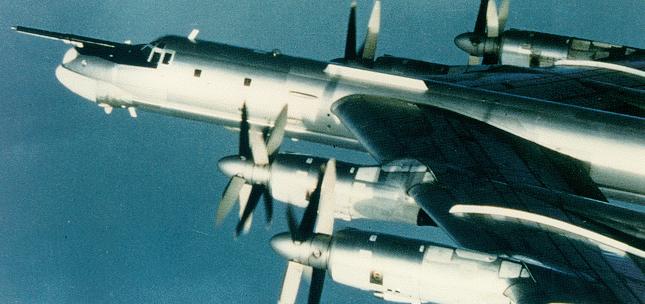
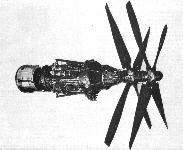
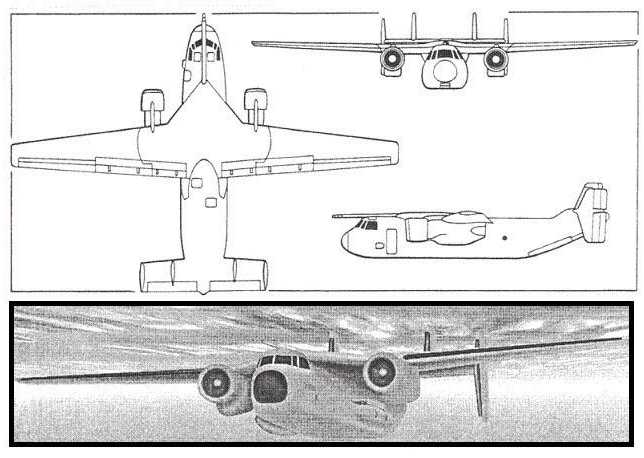
 www.youtube.com/watch?v=I_1AS13lnjg
www.youtube.com/watch?v=I_1AS13lnjg
An even better approach that would not expose 5, 000 men and women to PGM destruction in a super carrier would be to have several squadrons of large transport seaplanes like the R3Y Tradewind contraprop flying from CONUS each with 1 or 2 AmphiGavins, then landing on the water and having theses amphibious light tanks swim ashore. The Russian Bear contraprop engines could be utilized on new Tradewinds for speed and fuel economy.
combatreform.org/seaplanetransports.htm
Very large seaplanes using Wing-In-Ground (WIG) technologies could deliver even heavy tank-equipped Army forces to try to overcome the "tyranny of time and distance" Les Grau writes about:
Of course, we already have C-17 Globemaster III land planes that can parachute airdrop 3 x M113 Gavins at-a-time; the problem in both seaplane and land plane forced entry options is TIME; flying from CONUS will take days to arrange and hours to execute; if a rogue element seized a nation's nuclear missiles we would have only HOURS to react.
Option 3: Mobile Off-Shore Bases (MOBs)
As said before, the limiting factor in our sea-based aircraft carriers is the weakness of the current CATBAR planes they operate which cannot even deliver a light mechanized force ashore. If we operate long-range transport planes from CONUS we avoid the fatal PGM vulnerability of packing thousands of men and women into a ship, but they are not on-the-scene to pounce on the rogue nation-state with nukes from a hair trigger.
combatreform.org/itstimetojointheMOB.htm
Mobile Off-Shore Bases (MOBs) comprised of many large off-shore oil rig platforms to form into a veritable artificial island would have up to 10, 000 foot long runways so full-sized C-5 transport planes could land. Everything an Army can bring to a fight, to include 70-ton M1 Abrams heavy tanks could be already based with a 5, 000 man MECHANDO brigade ready-to-fight. Such air-mech MECHANDO forces would be on a 7 mph mobile base that could move to evade PGM targeting--something land bases could only do by great effort by moving every one of its pieces.
The MOB and its air-mech MECHANDO brigade can be positioned off-the-coast of a nearby nation-state or sub-national terrorist group--without alerting them or infuriating the locals as a land base would--for days, months and even years at a time, yet be ready to smother any attempts to fire PGMs with WMDs in concert with the RIF-directed PGM Assault ship's missile barrage. NATO forces like UK Maneuver Brigades with the Paras could do tours staged on a MOB in the Arabian Sea ready to parachute in from C-130/C-17s with light tanks to take-down any rogues before they can strike.
What I have described above is a FULL ADAPTATION to the PGM/WMD threat and not a cobbling together of various nation-state war systems at the last minute that even together cannot pre-empt mass murder. We need James Bond--and we need him now.
NOTES
1. http://en.wikipedia.org/wiki/RMS_Lancastria
2. CFR Illuminati Outer-Circle Member Makes an Honest Warning
www.scribd.com/doc/24031188/Pentagon-s-Wasting-Assets-Krepinevich
Foreign Affairs
, July-August 2009The Pentagon's Wasting Assets
The Eroding Foundations of American PowerAndrew F. Krepinevich, Jr.
Volume 88 • Number 4
Andrew F. Krepinevich, Jr., is President of the Center for Strategic and Budgetary Assessments and the author of Seven Deadly Scenarios.
______________________________________________
The military foundations of the United States' global dominance are eroding. For the past several decades, an overwhelming advantage in technology and resources has given the U.S. military an unmatched ability to project power worldwide. This has allowed it to guarantee U.S. access to the global commons, assure the safety of the homeland, and underwrite security commitments around the globe. U.S. grand strategy assumes that such advantages will continue indefinitely. In fact, they are already starting to disappear. Several events in recent years have demonstrated that traditional means and methods of projecting power and accessing the global commons are growing increasingly obsolete-becoming "wasting assets," in the language of defense strategists. The diffusion of advanced military technologies, combined with the continued rise of new powers, such as China, and hostile states, such as Iran, will make it progressively more expensive in blood and treasure- perhaps prohibitively expensive-for U.S. forces to carry out their missions in areas of vital interest, including East Asia and the Persian Gulf. Military forces that do deploy successfully will find it increasingly di⁄cult to defend what they have been sent to protect. Meanwhile, the U.S. military's long-unfettered access to [18] the global commons-including space and cyberspace-is being increasingly challenged. Recently, Secretary of Defense Robert Gates argued in these pages for a more "balanced" U.S. military, one that is better suited for the types of irregular conflicts now being waged in Afghanistan and Iraq. However, he also cautioned, "It would be irresponsible not to think about and prepare for the future." Despite this admonition, U.S. policymakers are discounting real future threats, thereby increasing the prospect of strategic surprises. What is needed is nothing short of a fundamental strategic review of the United States' position in the world-one similar in depth and scope to those undertaken in the early days of the Cold War. a dangerous game The term "wasting asset" became common among U.S. policymakers in the early days of the Cold War. At the end of World War II, the United States possessed an incalculable strategic advantage: a monopoly on nuclear weapons. So when the Soviet Union tested its first atomic bomb in August 1949, it triggered a sense of panic in the United States, as the U.S. nuclear arsenal had become a wasting asset. The United States responded with a major effort to bring together the nation's best strategists to devise a new approach. That effort yielded the Truman administration's National Security Council report nsc-68 and, later, the Eisenhower administration's Solarium Study and nsc-162/2. These became the foundation of a new U.S. strategy to counter a nuclear Soviet Union. To help offset the loss of its nuclear monopoly, the United States sought to develop new advantages while sustaining certain old advantages. It exploited its continuing technological edge to maintain a highly effective nuclear deterrent. Shortly after the Soviet nuclear test of a fission weapon, President Harry Truman approved plans to develop thermonuclear, or fusion, weapons, which have far greater destructive power. Equally important were efforts to sustain the U.S. military's unsurpassed ability to project and sustain large forces around the globe, as demonstrated during the wars in Korea, Vietnam, and the Persian Gulf, when the United States transported large field armies overseas.[19]
This force projection was made possible by the U.S. military's ability to access the global commons, principally on the seas and in the air but increasingly in the space and cyberspace domains as well. And with the Soviet Union's collapse in December 1991, the United States' ability to project military power was effectively unconstrained. There were large-scale deployments to Panama, Haiti, and the Balkans during the late 1980s and 1990s, and these were later eclipsed by the dispatch of large expeditionary forces to Afghanistan and Iraq. But this long record of military successes masks major geopolitical and technological trends that are rapidly eroding the advantages the U.S. military has long enjoyed. This was dramatically illustrated by a major exercise conducted earlier this decade. In the summer of 2002, the Pentagon conducted its largest war-gaming exercise since the end of the Cold War. Called Millennium Challenge 2002, it pitted the United States against an "unnamed Persian Gulf military" meant to be a stand-in for Iran. The outcome was disquieting: what many expected to be yet another demonstration of the United States' military might turned out to be anything but. The "Iranian" forces, led by retired Marine Corps Lieutenant General Paul Van Riper, successfully countered the U.S. forces at every turn. The U.S. fleet that steamed into the Persian Gulf found itself subjected to a surprise attack by swarms of Iranian suicide vessels and anti-ship cruise missiles (ascms). Well over half the U.S. ships were sunk or otherwise put out of action in what would have been the United States' worst naval disaster since Pearl Harbor. Meanwhile, Van Riper kept his Iranian cruise and ballistic missile forces on the move, frustrating the U.S. commanders' efforts to track and destroy them. Rather than turn his air-defense radars on and expose them to prompt destruction from U.S. aircraft armed with anti-radiation missiles, Van Riper left his units' systems turned off. Since no one could be sure of where the Iranian defenses were positioned, it was risky for U.S. cargo aircraft to land and resupply the U.S. ground forces that had deployed on Iranian soil. Exasperated and embarrassed at the success of the mock Iranian force, the senior U.S. commanders overseeing the war game's progress called for a "do-over." They directed the U.S. fleet to be "refloated" and compelled the enemy forces to turn on their radars and expose themselves to attack. The enemy missile forces were ordered to cease their [20] evasive maneuvers. Recast in this manner-and with Van Riper "relieved" of his command, apparently for having executed it too well-the game proceeded to a much more agreeable conclusion. The official results of Millennium Challenge may have validated the military's own ideas about its ability to project forces into contested areas. But Van Riper's success should have served as a warning: projecting power into an area of vital interest to the United States using traditional forces and operational concepts will become increasingly di⁄cult. Indeed, these means and methods are at great risk of experiencing significant, perhaps even precipitous, declines in value. The Millennium Challenge exercise was a harbinger of the growing problems of power projection-especially in coastal zones, maritime chokepoints (such as the Strait of Hormuz), and constricted waters (such as the Persian Gulf ). As the initial success of Van Riper's "Iranian" forces demonstrated, the risks in such areas are becoming progressively greater, especially when the United States is facing a clever adversary. In the real world, Iran and other states can buy high-speed, sea-skimming ascms in quantity. In confined waters near shore, U.S. warships would have little warning time to defend against these weapons. The same can be said of high-speed suicide boats packed with explosives, which can hide among commercial vessels. Widely available modern sea mines are far more difficult to detect than were those plaguing the U.S. fleet during the 1991 Gulf War. Quiet diesel submarines operating in noisy waters, such as the Strait of Hormuz, are very di⁄cult to detect. Iran's possession of all of these weapons and vessels suggests that the Persian Gulf-the jugular of the world's oil supply-could become a no-go zone for the U.S. Navy. western technologies, eastern stratagems In East Asia, an even more formidable challenge is emerging. China's People's Liberation Army is aggressively developing capabilities and strategies to degrade the U.S. military's ability to project power into the region. The pla's buildup is being guided by the lessons drawn by the Chinese military from the two Iraq wars and the 1999 war in the Balkans. The Chinese were particularly impressed by the effectiveness of U.S. precision-strike capabilities and the role played by space [21] systems, which provided reliable navigation and communications, as well as weather, targeting, and missile-warning data. The effort is also being driven by the Chinese experience during the 1995-96 Taiwan Strait crisis, when a U.S. aircraft carrier, the U.S.S. Nimitz, entered the Taiwan Strait to compel China to stand down from its threats to Taiwan. This display of U.S. naval power bolstered China's determination to curb the United States' access to East Asia. Senior Chinese political and military leaders decided it would be foolhardy to challenge the U.S. military head-on. Instead, China is working to combine Western technology with Eastern stratagems, aiming to be able to seize the initiative in the Projecting power into event of a conflict by exploiting the element of surprise. The Chinese approach would entail areas of crucial interest destroying or disrupting the U.S. military's communications networks and launching is becoming preemptive attacks, to the point where such increasingly difficult. attacks, or even the threat of such attacks, would raise the costs of U.S. action to prohibitive levels. The Chinese call the military capabilities that support this strategy "assassin's mace." The underlying mantra is that assassin's mace weapons and techniques will enable "the inferior" (China) to defeat "the superior" (the United States). Chinese efforts are focused on developing and fielding what U.S. military analysts refer to as "anti-access/area-denial" (a2/ad) capabilities. Generally speaking, Chinese anti-access forces seek to deny U.S. forces the ability to operate from forward bases, such as Kadena Air Base, on Okinawa, and Andersen Air Force Base, on Guam. The Chinese are, for example, fielding large numbers of conventionally armed ballistic missiles capable of striking these bases with a high degree of accuracy. Although recent advances in directed-energy technology-such as solid-state lasers-may enable the United States to field significantly more effective missile defense systems in the next decade, present defenses against ballistic missile attacks are limited. These defenses can be overwhelmed when confronted with missile barrages. The intended message to the United States and its East Asian allies and partners is clear: China has the means to put at risk the forward bases from which most U.S. strike aircraft must operate. [22]
The Pentagon's Wasting Assets Area-denial capabilities are aimed at restricting the U.S. Navy's freedom of action from China's coast out to "the second island chain"- a line of islands that extends roughly from the southeastern edge of Japan to Guam. The pla is constructing over-the-horizon radars, fielding unmanned aerial vehicles, and deploying reconnaissance satellites to detect U.S. surface warships at progressively greater distances. It is acquiring a large number of submarines armed with advanced torpedoes and high-speed, sea-skimming ascms to stalk U.S. carriers and their escorts. (In 2006, a Chinese submarine surfaced in the midst of a U.S. carrier strike group, much to the U.S. Navy's embarrassment.) And it is procuring aircraft equipped with high-speed ascms and fielding anti-ship ballistic missiles that can strike U.S. carriers at extended ranges. Advanced anti-ship mines may constrain U.S. naval operations even further in coastal areas. The implications of these efforts are clear. East Asian waters are slowly but surely becoming another potential no-go zone for U.S. ships, particularly for aircraft carriers, which carry short-range strike aircraft that require them to operate well within the reach of the pla's a2/ad systems if they want remain operationally relevant. The large air bases in the region that host the U.S. Air Force's short-range strike aircraft and support aircraft are similarly under increased threat. All thus risk becoming wasting assets. If the United States does not adapt to these emerging challenges, the military balance in Asia will be fundamentally transformed in Beijing's favor. This would increase the danger that China might be encouraged to resolve outstanding regional security issues through coercion, if not aggression. deadly irregulars Irregular forces are also gaining greater access to advanced weaponry. As they do, they are increasingly capable of presenting serious threats to U.S. military operations on levels hitherto reserved for state adversaries. These, too, threaten to turn the U.S. military's forward bases and other key infrastructure into wasting assets. Since the Korean War, the U.S. military has become used to operating with secure rear areas. Large U.S. bases, such as that in Cam Ranh Bay, South Vietnam, and, more recently, Camp Victory, in Iraq,[23]
and Bagram Air Base, in Afghanistan, have been sanctuaries in the midst of conflict. Even insurgent attacks on the Green Zone in Baghdad have failed to do significant harm. This happy state of affairs is almost surely coming to an end. The Second Lebanon War, waged between Hezbollah and Israel during the summer of 2006, was the proverbial canary in the coal mine. It suggested that a new, more deadly form of irregular conflict- known as "irregular warfare under high-technology conditions"-may be emerging. The war showed how di⁄cult it is becoming for conventional military forces to defend key fixed targets, such as military bases, critical economic infrastructure, and densely populated areas, against irregular forces, which are increasingly armed with rapidly proliferating "ramm" (rocket, artillery, mortar, and missile) capabilities. During the 34-day conflict, Hezbollah fired some 4,000 rockets into Israel. Most of these were short range, and all of them were unguided. Yet more than 300,000 Israeli citizens had to be evacuated from their homes. Israel's Haifa oil refinery had to dump much of its stored oil for fear that a rocket attack could spark a major explosion and fires in the city. The war's economic impact was considerable. Some of Hezbollah's rockets, although short range by modern military standards, could be fired over 50 miles. Compare this to the mortars and rockets used by Vietcong guerrillas against U.S. bases in South Vietnam. To combat that threat, U.S. forces simply patrolled to keep the enemy beyond his four-mile mortar range. Applying this approach against an enemy whose rocket range extends out to 50 miles is simply not possible. The growing range of ramms available to irregular forces is not the only, or even the deadliest, problem. The U.S. military has long enjoyed a near monopoly on the use of guided, or "smart," munitions, which offer the enormous benefit of high accuracy independent of a weapon's range. But now guided ramms (or "g-ramms") are proliferating from powers such as China and Russia. Once these are in the hands of irregular forces, those forces will be able to hit targets with great precision and reliability. Moreover, such weapons do not require a high degree of operator training. As a harbinger, during the Second Lebanon War, Hezbollah irregulars hit an Israeli warship with an Iranian-made guided ascm and destroyed or disabled over 50 Israeli [24]
tanks with sophisticated Russian-made guided antitank missiles. The ability of irregular forces to precisely hit critical points, such as airfields, harbor facilities, and logistics depots, will pose serious problems for the U.S. military's way of operating.
Virtual warfare
Cyberspace is another domain in which the U.S. military may face rapidly growing risk. Information technology (it) permeates every aspect of its operations, from logistics and command and control to targeting and guidance. As this dependence on it has grown, so, too, has vulnerability to disruptions-especially disruptions of battle networks linking U.S. forces. This vulnerability also affects the United States' economic infrastructure, where everything from transportation to electricity and finance depends on cybernetworks. Attacks on both military and civilian it networks have been increasing for at least a decade. Russia has been accused of conducting cyberwarfare campaigns against Estonia in 2007, Georgia in 2008, and Kyrgyzstan in 2009. China is reputed to have been behind cyberattacks that disabled computer systems at the Pentagon, as well as cyberattacks against France, Germany, and the United Kingdom. Cyberwarfare could enable other countries-or even disaªected groups-to inflict crippling damage on the U.S. economy. Moreover, U.S. military operations are very dependent on commercial land-based information infrastructure. If cyberattacks inflicted substantial damage on them or disrupted them, not only would great economic turmoil ensue; much of the military capability of the United States could prove to be the modern equivalent of the Maginot Line. The United States' armed forces also rely heavily on military and commercial satellites. In recent years, the Chinese military has shown that it can neutralize or destroy satellites in low-earth orbit (where most satellites are located) by launching antisatellite ballistic missiles or firing ground-based lasers. As China's lunar exploration program matures, the pla will likely acquire the ability to destroy the Global Positioning System (gps) constellation, which is essential for guiding many "smart" weapons to their targets. If China continues to develop and field antisatellite capabilities, the U.S. satellite architecture [25]
may also become a wasting asset, one highly dependent on Chinese sufferance for its effective operation. the imperative to adapt If history is any guide, these trends cannot be undone. Technology inevitably spreads, and no military has ever enjoyed a perpetual monopoly on any capability.To a significant extent, the U.S. military's wasting assets are the direct consequence of the unavoidable loss of its near monopoly on guided weapons. This monopoly simply cannot be regained. This raises troubling questions. For example, will the United States accept that several areas of vital interest are becoming no-go zones for its military, or will it take steps to address the challenge? Will the United States accept a posture of vulnerability in regard to its satellite architecture and cyberinfrastructure, or are alternatives available to redress the problem? How must U.S. strategy adapt in a world of rising powers and spreading technologies? Are there cost-effective alternatives to accepting growing vulnerability, or must the United States adopt a more modest strategy? Analogous kinds of problems have been encountered and overcome in the past by the United States and other preeminent nations. During World War II, new U.S. carrier operations were so effective in projecting power that they rendered battleships obsolete. [EDITOR: vehemently disagree; only heavily armored battleships can withstand PGM fires and survive; aircraft carriers cannot withstand even a single hit to their fuel and bomb-cluttered flight decks]
In addressing the Soviet Union's nuclear buildup, the United States developed early warning systems (satellites and distant early warning radars) and forces centered on a triad of delivery systems (bombers and land- and sea-based missiles) to enable deterrence. Just as the Truman and Eisenhower administrations were faced with the need to confront diffcult and complex strategic choices nearly 60 years ago, so, too, is the Obama administration today. The United States can either adapt to contemporary developments-or ignore them at its peril. There is, first of all, a compelling need to develop new ways of creating military advantage in the face of contemporary geopolitical and technological trends. That means taking a hard look at military spending and planning and investing in certain areas of potential advantage while divesting from other assets. And Washington [26]
must keep in mind that efforts to field new capabilities and put in place new ways of operating typically take time, often a decade or more, to come to fruition. But before questions about how to adapt military capabilities to future requirements can be considered coherently, there must be a new strategic framework. In the face of growing Soviet competition, Presidents Truman and Dwight Eisenhower made decisions about U.S. military capabilities in the context of an overall strategy built around the objective of containing Soviet power and deterring aggression-both enabled by a strong U.S. economy, robust alliances with like-minded countries and other powers, and a technically advanced U.S. military The United States operating within the framework of a global network of bases. Given the similar scale must pursue a more of today's challenges, the Obama administrations modest grand strategy choices regarding the future U.S. military posture must be informed by an while seeking new areas overarching strategy as ambitious as the one of military advantage. during the first decade of the Cold War. This strategy must take into account geopolitical factors, rapid advances in military technologies, and the United States' weakened economic standing. It must address the major challenges posed by radical Islamist groups (and by the related campaigns to defeat them in Afghanistan and Iraq). It must also address the prospect of nuclear proliferation. Should Iran become a nuclear-armed state, it could well spur a round of proliferation in the Arab world, further complicating the U.S. military's ability to project power into the Middle East in defense of key interests. Finally, there is China, a key U.S. trading partner and potentially a strong force in support of well-established international norms of behavior. At the same time, however, China's military buildup suggests that it may be tempted to pursue its aims through coercion, if not aggression, unless deterred from so doing. The strategy must also recognize two wasting assets of a nonmilitary kind: the erosion of the United States' financial position and the reality that the United States' allies will not shoulder a larger share of the collective-security burden. With few exceptions, long-standing allies' continued refusal to do more for the common defense stems from a [27]
lack of agreement on future threats, underlying economic weakness, and a willingness to be free riders, benefiting from U.S. efforts and expenditures. This is unlikely to change even with a popular new administration in Washington. Even absent the global economic crisis, U.S. allies such as France, Germany, Japan, and the United Kingdom are saddled with aging populations and burdensome social welfare systems, leaving ever fewer resources available for contributing to collective security. All this suggests that the United States must pursue a more modest strategy than that advanced by the Bush administration in the wake of 9/11-one that reflects a better balance between goals and resources, features a reduced emphasis on wasting military assets, and involves the vigorous identification, development, and exploitation of new areas of advantage. some modest proposals There are a number of initiatives that can and should be undertaken now. Investments in specific new capabilities may be premature given both the current economic circumstances and the absence of a clear strategy. However, it seems indisputable that divestment from what are clearly wasting assets should be heavily emphasized in order to avoid both substantial monetary costs and opportunity costs- particularly in an era of growing budgetary and economic constraints. For one thing, the United States should adopt an indirect approach to addressing instability in the developing world, conserving the bulk of its resources for meeting other strategic priorities. This means exploiting the U.S. military's advantage in highly trained manpower by emphasizing the training, equipping, and advising of indigenous forces of countries threatened by subversion, especially states confronting radical Islamist groups, rather than direct combat operations. In Afghanistan and Iraq, where U.S. forces are already deployed in large numbers, Washington should continue its efforts to field indigenous forces and withdraw U.S. combat units. The U.S. military will need to maintain a capacity to "surge" forces should a state of vital interest begin to fail, but such deployments should be a last resort. What is especially important is that the [28] lessons learned by the U.S. military and the capabilities developed in waging irregular warfare be institutionalized. Some of the resources thereby freed up should be invested in developing new ways to cope with the g-ramm challenge. Any solution will most likely be found in a combination of existing and emerging capabilities, and in new ways of employing them. Several possibilities are worth exploring. Loitering "hunter-killer" reconnaissance and strike aircraft-both manned and unmanned-could be used to search for enemy g-ramm equipped forces and, once identified, engage them quickly before the enemy can fire or disperse. Another option is to harden targets against such attacks, although doing so is an expensive proposition and thus feasible only for the highest-priority targets. There are active defenses that can intercept g-ramm projectiles, although price remains a major problem here, since interceptors tend to cost far more than g-ramm projectiles. Rapid advances in solid-state lasers may, however, enable defense systems that have a projected cost-per-shot ratio that is far less than that of traditional interceptors. Regarding traditional power projection, the United States should [29]
adopt an offsetting strategy whose objective is to parry efforts by China and Iran to deny the U.S. military access to East Asia and the Persian Gulf. The United States should make it clear that although it does not view Beijing as an enemy, it intends to continue reassuring its allies and friends in the region that they will not become victims of coercion or aggression. The same can be said of Iran, which is fielding a more modest version of China's capabilities. The offsetting strategy would be designed to preserve a stable balance, not generate a threat.
Maintaining the United States' ability to project power in an a2/ad environment will require multifaceted responses. The growing threat to U.S. forward air bases from Chinese assassin's mace capabilities might be handled in several possible ways. Bases could be hardened against attack by missiles with conventional warheads, perhaps combined with missile defenses. An excessive reliance on vulnerable bases could be reduced by developing long-range reconnaissance and strike systems. To offset the growing vulnerability of its major surface ships, the U.S. Navy could acquire more large submarines armed with conventional cruise missiles. To avoid operational irrelevance, carriers should reduce their reliance on short-range manned aircraft in favor of
much longer-range unmanned aircraft, some of which are now in development.Advances in missile and air defenses could also play a key role in protecting the fleet. Since primacy in undersea warfare is a prerequisite for other naval operations, priority must be given to expanding the navy's edge in antisubmarine warfare. The current plans to increase submarine production must be sustained, and design work on unmanned underwater vehicles and a new class of submarines should also be initiated. Several options to preserve U.S. access to space seem worth exploring. The government should support and exploit advances in it, nanotechnology, and enhanced forms of propulsion in order to shift from relying on a relatively small number of large "mainframe" satellites to using micro- and nanosatellites that might be configured in less vulnerable and more easily repaired networks. Alternatively, it may be possible to use land-based clusters of unmanned aerial vehicles to substitute, at least on a limited basis, for damaged or destroyed satellites. The cyberwarfare competition is so shrouded in secrecy that it is di⁄cult to determine the United States' level of vulnerability, let alone [30]options for addressing it. It may be that a defensive strategy cannot be successfully pursued and that the United States will be forced to develop its own cyberweapons and rely on deterring the worst sorts of cyberattacks. In short, the potential for a surprise of the worst sort in this realm remains a real possibility. Significant resources may be liberated by reducing the military's emphasis on capabilities whose value will likely diminish greatly in the future. Defense Secretary Gates has recently taken some initial positive steps in this direction. For example, the navy's new Zumwalt class destroyers are too expensive to address the challenges posed by irregular warfare and too vulnerable to operate in East Asia or the Persian Gulf; Gates is moving forward with plans to terminate their production. The army has proposed spending over $150 billion on its constellation of Future Combat Systems. Yet the fcs are optimized for traditional conventional warfare rather than the persistent irregular warfare the army now confronts. The defense secretary's decision to terminate the eight fcs combat vehicles is on the mark, as is his cancellation of the tactical satellite program. Large satellites that are highly effective so long as space is a sanctuary must be reconsidered in recognition of the fact that this condition no longer obtains. Much more needs to be done to free up defense resources. The military plans to spend hundreds of billions of dollars on several thousand short-range strike aircraft that must operate from forward land bases or carriers, both of which are increasingly vulnerable. These programs should be scaled back in favor of greater investment in longer-range systems, such as a next-generation bomber and the navy's
long-range unmanned strike system. The U.S. marines are planning to field a new amphibious vehicle, the Expeditionary Fighting Vehicle, that is able to swim ashore and then fight as a land combat vehicle. Yet the fleet that would launch these is being forced to operate ever further from the shore, far beyond the distance for which the efv was designed. The efv is also highly vulnerable to the roadside bombs that are now proliferating throughout the developing world. The system should be canceled. It simply makes no sense to spend so many defense dollars on new systems that are essentially wasting assets before they even reach the field.[31]more than just a military problem Security, of course, involves more than just defense policy. For one thing, Washington must do much more than it has in recent years to attract capable and willing allies. After the Cold War, during its "unipolar moment," the United States seemed to have no need for allies, save perhaps for legitimizing its use of force so that it could fulfill its role as the primary guarantor of the international system. There are states that live in increasingly dangerous neighborhoods that may, with competent U.S. diplomacy, emerge as important allies in this new age. Muslim democracies, such as Indonesia, Pakistan, and Turkey, should be engaged. India, the world's largest democracy, has one of the world's largest Muslim populations and shares U.S. concerns over China's military buildup. Despite its demographic decline and economic difficulties, Japan could shoulder significantly more responsibility than it has in the past-and has increasing reason to do so. South Korea is capable of assuming full responsibility for defending itself against a land assault from the North. Australia remains a highly valued ally, always punching well above its weight. The European allies, although diminished in stature and military capability, can still provide significant support, as demonstrated by the United Kingdom's strong showing in both Afghanistan and Iraq. Nor should engaging China and Russia be discounted. Despite the obvious difficulties involved, their security cannot be isolated from instability in the developing world or from nuclear proliferation. Even more important, the United States must get its own house in order. The nation's economic might has long been a critical source of competitive advantage. U.S. relative advantage may erode over time, but there is much to suggest that it can be sustained for several generations. Compared with the other great powers, the United States has by far the best demographic profile. China, Europe, Japan, and Russia are all aging more rapidly than the United States, and India confronts a youth bulge that may prove di⁄cult to manage. The United States also boasts a skilled manpower base (although preserving it will require reforming the educational system, which is lagging in key areas). The United States is blessed with a superior store of natural resources, which only Russia can possibly match. It also boasts the world's most dynamic [32] free-enterprise system.
But Americans must learn once again to invest in their future and live within their means. The United States entered the Cold War as the world's leading producer nation; now it is the world's leading consumer and debtor nation. Just as it took over half a decade of effort to address the United States' loss of its nuclear monopoly, a strategy to address the United States' current wasting assets will not be crafted overnight. What is needed is a sense of urgency similar to that which animated policymakers at the start of the Cold War, as well as persistent attention from the president and his top advisers. Yes, the nation confronts a severe financial crisis. But President Barack Obama may take some inspiration from President Franklin Roosevelt, who had to deal with a prolonged, severe depression even while storm clouds gathered overseas. A decade ago, the debate in defense circles centered on whether or not the U.S. military needed to undertake a "transformation"-that is, to field a substantially different kind of military to address the challenges of a new era with new rivals and rapidly spreading technologies. The idea faced stiff resistance from many in the military. But the price for such willful ignorance can be steep. Confronted with modern irregular warfare in the wake of the invasions of Afghanistan in 2001 and Iraq in 2003, the United States found itself engaging in reactive transformation (as did the Israelis following the Second Lebanon War). Today, despite growing evidence that a wide array of U.S. military capabilities are depreciating in value, many remain reluctant to engage in the hard thinking necessary for anticipatory transformation- preparing for emerging challenges by identifying new capabilities to offset or replace those that are progressively wasting. Ignoring growing challenges to the United States' ability to project and sustain military capability overseas will not make those challenges go away. Sooner or later, they-and their implications for U.S. security- must be confronted. A decline in the U.S. military's ability to influence events abroad may be inevitable; however, it should not be the result of indifference or lack of attention. There are important strategic choices that the United States must make. To avoid those choices now is simply to allow the United States' rivals to make them instead. [33]
_______________________________________________________
Michael Sparks is a 30+ year USMC and Army veteran Paratroop infantry enlisted NCO and officer, defense consultant who leads the non-profit 1st Tactical Studies Group (Airborne). His book based on research included in this article, James Bond is For Real: The Untold Story of Political & Military Technological Threats Ian Fleming Warned Us About is coming out next year. www.jamesbondisforreal.com
